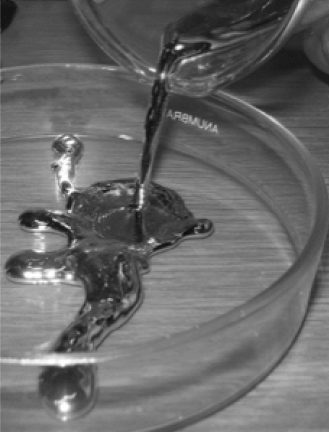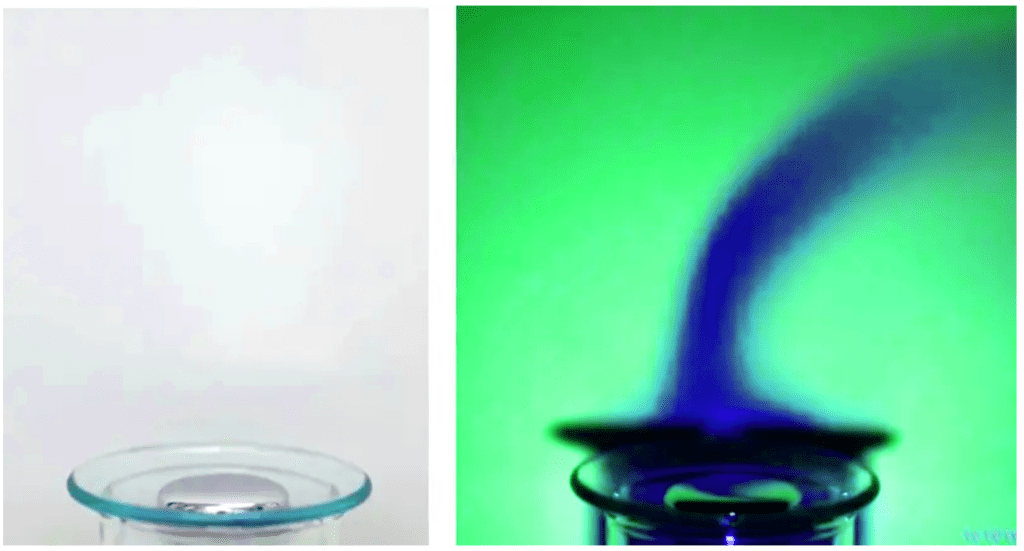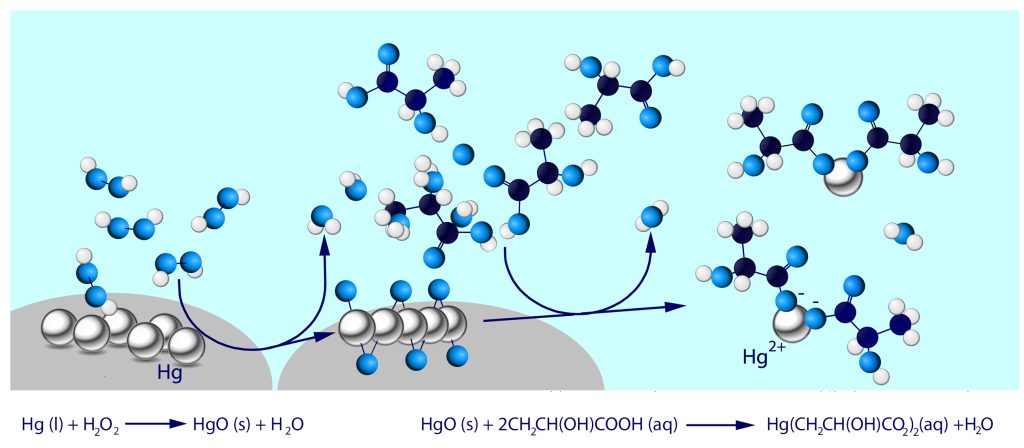
AZURE-M
Mercury Dissolvers
Mercury is a toxic metal which is hazardous to living organisms. Surfaces contaminated with mercury need to be decontaminated but historically removal has been considered very difficult as mercury and its salts are impossible to dissolve or at least only very sparingly soluble in strong acids. However, Bluesky has developed and patented two new dissolvers that allow both elemental mercury metal and mercuric sulphide to be dissolved rapidly through a static soak treatment at room temperature or by applying the dissolver as a fine spray to contaminated walls and surfaces. Patent GB2218581.3.
Mercury Decontamination
During oilfield production operations, mercury and mercury salts naturally present in geological formations are associated with hydrocarbon liquid, formation water and gases and may deposit on the surfaces of pipes and vessels during production and processing.
Mercury is toxic and exposure has harmful effects on the nervous, digestive and immune systems, lungs and kidneys and exposure to it can be fatal.


The main issue with elemental mercury is the inhalation of toxic mercury vapour which allows mercury to enter the blood via the lungs. Although mercury is a metal, it is a liquid under normal ambient conditions and produces a fine vapour of elemental mercury that enters the air as an invisible, odourless toxic cloud. Once in the air the vapour can remain airborne for up to a year and travel thousands of miles.
AZURE-M contains a converting agent and carboxylic acid which combine to oxidise the mercury and then dissolve the mercuric oxide to form a clear aqueous solution of mercuric salt.

For oilfield decontamination operations the mercury present in the dissolver can be disposed of either by injecting the waste solution back into the permeable rock formation deep underground from where it originated via a disposal well or may be reprecipitated as a solid and isolated by filtration as black mercuric sulphide in the form of meta-Cinnabar for disposal.





Dissolution of a 0.60g globule of elemental Mercury in AZURE-M over 4 hours at 20C
Mercury Vapour Treatment with AZURE-M
Elemental mercury emits clouds of mercury vapour into the atmosphere under ambient conditions. The vapour consists of extremely small droplets of elemental mercury that can remain suspended in the atmosphere.
Enclosed storage tanks may contain elemental mercury that has partially vapourised to create a hazardous atmosphere rich in mercury vapour. If these tanks need to be entered by personnel it is good practice to treat the toxic air by removing any suspended mercury vapour. This can be easily achieved by applying an atomised spray of AZURE-M to clear any mercury vapour. Any elemental mercury present on the floor of the vessel can be prevented from vapourising by immersing it in a shallow layer of AZURE-M which both dissolves the mercury and prevents the evolution of vapour.
